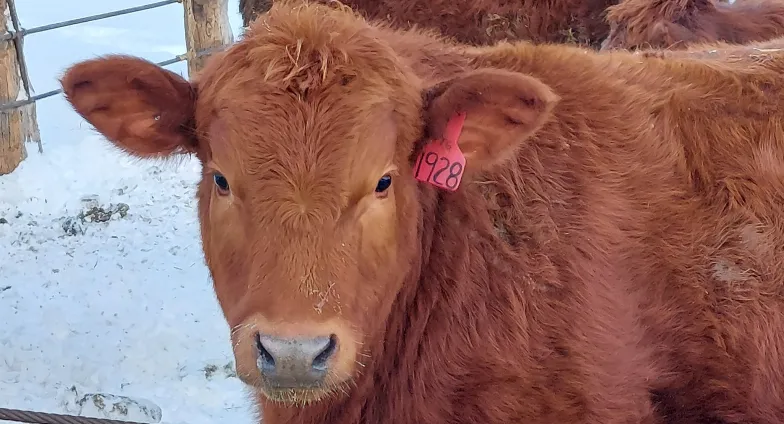Cattle and Cold
The new year has given us a drop of temperatures and a healthy layer of snow to help slow our daily livestock chores. Luckily, our cattle had a chance to acclimate to colder temperatures before the depth of winter froze up the first of our drinkers. It is still recommended to make plans to reduce future bouts of cold stress as the winter continues.
Lower critical temperature is the lower limit of the comfort zone temperature, where livestock will begin to experience cold stress. Many factors will affect the animal’s lower critical temperature tolerance, including the thickness of hide and haircoat, whether the animals are wet or dry, their age and stage of production, and body condition. Generally, a lower critical temperature of 18℉ is used for livestock with dry, heavy coats but -6℉ and calm conditions have been used for well-acclimated animals.
As temperatures decline past the lower critical temperature, cattle nutrition requirements begin to rise. Once the lower critical temperature has been reached the body will compensate by metabolizing fat storage to maintain body temperature. To combat the loss of body condition, we need to provide additional energy to the animal. The rule of thumb is with every degree below the lower critical temperature we need to increase TDN by 1%. For example, at the 8th month of gestation a 1400-pound cow would require 15.5 pounds TDN at 30℉, 16.25 pounds TDN at 15℉, 17.0 pounds TDN at 0℉, and 17.75 pounds TDN at -15℉ with a light 15 mph wind (windchill of roughly -50℉). With a forage containing 56% TDN, that cow would require an additional 4 pounds (17.75-15.5 pounds = 2.25 pounds TDN ÷ .56) on a dry matter basis on the above example.
There are a few methods of minimizing cold stressors which include providing access to windbreaks, adequate bedding sources, and alternative feeding times. Wind breaks can range from portable panels with a tarp or round bales to a permanent wind fence or pastures with shelterbelts or low spots. Feeding rations in the late afternoon helps increase fermentation heat through colder portions of the night.
Providing bedding helps create a layer between the ground/snow and the animal and is crucial for both cows and herd bulls. Frostbitten scrotums and testes can reduce bull fertility. Inflammation caused by frostbite can generate heat which can affect the sperm which are maturing in the epididymis on the lower end of the scrotum. The effects of frostbite in January and February could still linger into March and April, and could be permanent in severe cases.
Please remember to prepare for winter by testing nutrient analysis of your stored forages. This can help reduce waste and better fulfill your herd’s nutrient requirements. Stay warm, everyone!
Colin Tobin, Ph.D.
colin.tobin@ndsu.edu
Research Animal Scientist

